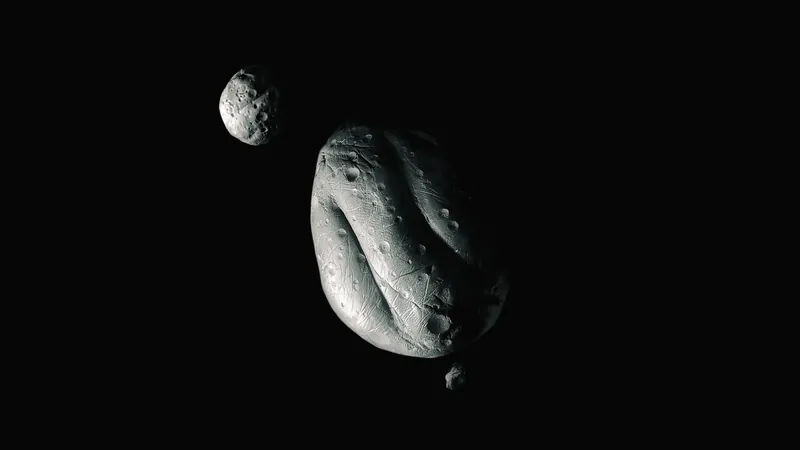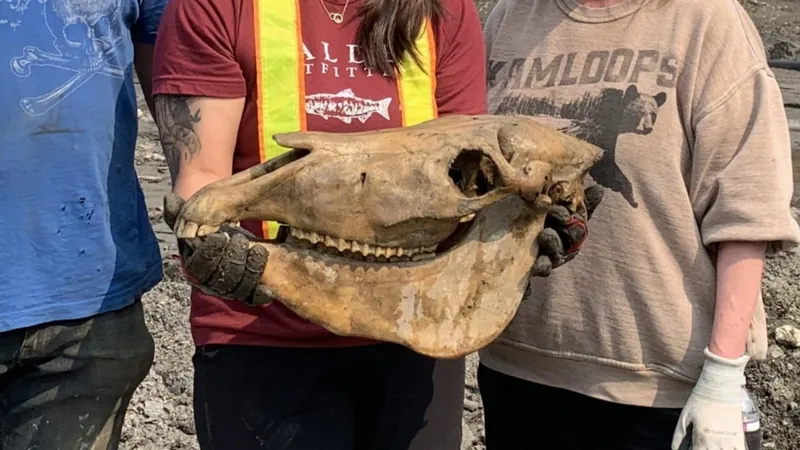
Unveiling the Secrets of Earth's Hidden 'Minimoons': Are They Lunar Fragments?
2025-07-13
Author: Ying
Discover the Mysteries of Earth’s Minimoons
Did you know that Earth might have at least six tiny lunar fragments, known as 'minimoons,' orbiting it at any given moment? A groundbreaking study reveals that these ephemeral companions, though small and elusive, may soon be spotted as they dance through our skies before returning to their orbit around the sun.
The Birth of Minimoons: How They Come to Be
When meteoroids crash into the moon, they eject debris into space, with some fragments escaping gravitational pull and becoming 'minimoons.' Most of these fragments are less than 6.5 feet (about 2 meters) wide and zip through space, making them hard to detect. Researchers suggest that while many of these particles are drawn toward the sun’s gravity, a few find their way into temporary orbits around our planet. As Robert Jedicke, a researcher at the University of Hawaii, explains, it's like a cosmic square dance where the partners are constantly shifting.
Are Minimoons Truly Lunar? Recent Discoveries Suggest Yes!
While the International Astronomical Union hasn't provided a clear definition for 'minimoons,' previous studies imply that these objects must orbit Earth at least once and come within roughly four times the distance between Earth and the moon. It’s believed that most minimoons potentially originate from the asteroid belt, yet current findings challenge this assumption, pointing towards lunar origins.
In 2016, the Pan-STARRS1 telescope discovered Kamo'oalewa, a fragment of the moon that formed during a past impact. This piece is still orbiting the sun in sync with Earth, and it’s estimated to have been blasted off the moon 1 to 10 million years ago after the Giordano Bruno crater's formation. More recently, another object, named 2024 PT5, appears to share a similar origin.
Calculating the Dance: How Many Minimoons Are There?
Jedicke and his teammates calculated that, on average, there are about 6.5 minimoons drifting around Earth at any given time. These lunar fragments typically last for about nine months before being swept back into the solar orbit. It’s a tantalizing guess, yet Jedicke cautions that this number could largely vary due to the numerous unknowns surrounding crater impacts and the characteristics of ejected debris.
Challenges in Spotting the Cosmic Dancers
Detecting these tiny moons is no easy feat! Their small size (between 3 to 7 feet in diameter) and swift movement make them difficult for even the most advanced telescopes to identify. Jedicke draws a parallel to finding a small vehicle speeding through traffic—challenging, yet possible with the right tools.
Only a handful of nights in extensive sky surveys have successfully picked up these fleeting visitors. However, the recent identification of 2020 CD3 provides hope that future observations will yield more discoveries. Once these minimoons are located, tracking them becomes simpler.
Future Prospects: What Lies Ahead?
Interestingly, minimoons could pave the way for exciting commercial opportunities. They may require the least amount of fuel for exploration compared to distant asteroids, offering a more straightforward path to extracting valuable resources.
From a scientific standpoint, understanding these transient moons could illuminate the formation and evolution of our solar system. Researchers like Jedicke believe studying how lunar debris escapes during impacts can deepen our insight into potential asteroid threats to Earth.
Engaging with Our Cosmic Neighbors
As scientists continue to investigate these little-known celestial travelers, the potential for discovering more 'minimoons' enhances our understanding of the cosmos and its history. Stay tuned as the dance of these cosmic fragments unfolds!




 Brasil (PT)
Brasil (PT)
 Canada (EN)
Canada (EN)
 Chile (ES)
Chile (ES)
 Česko (CS)
Česko (CS)
 대한민국 (KO)
대한민국 (KO)
 España (ES)
España (ES)
 France (FR)
France (FR)
 Hong Kong (EN)
Hong Kong (EN)
 Italia (IT)
Italia (IT)
 日本 (JA)
日本 (JA)
 Magyarország (HU)
Magyarország (HU)
 Norge (NO)
Norge (NO)
 Polska (PL)
Polska (PL)
 Schweiz (DE)
Schweiz (DE)
 Singapore (EN)
Singapore (EN)
 Sverige (SV)
Sverige (SV)
 Suomi (FI)
Suomi (FI)
 Türkiye (TR)
Türkiye (TR)
 الإمارات العربية المتحدة (AR)
الإمارات العربية المتحدة (AR)